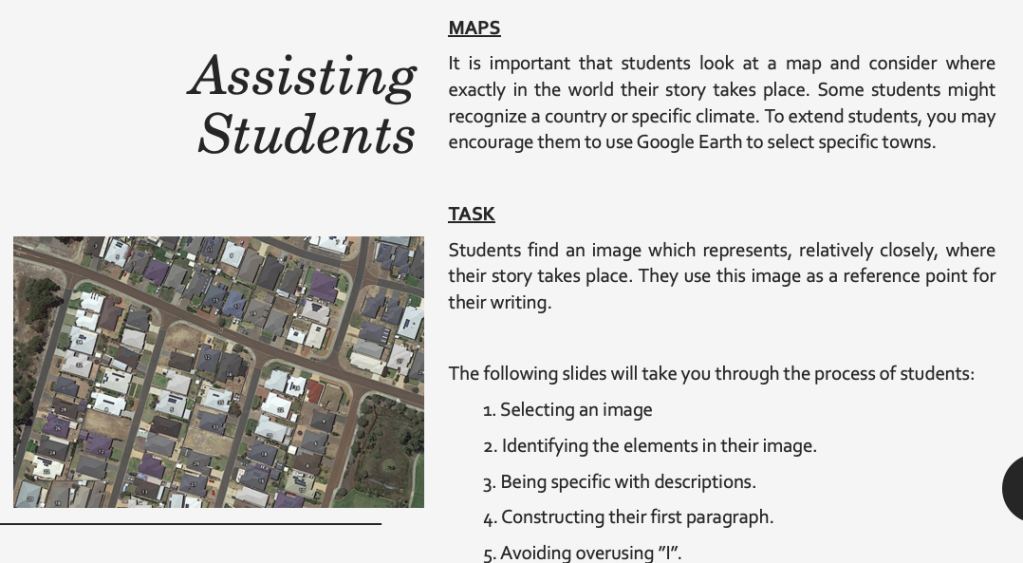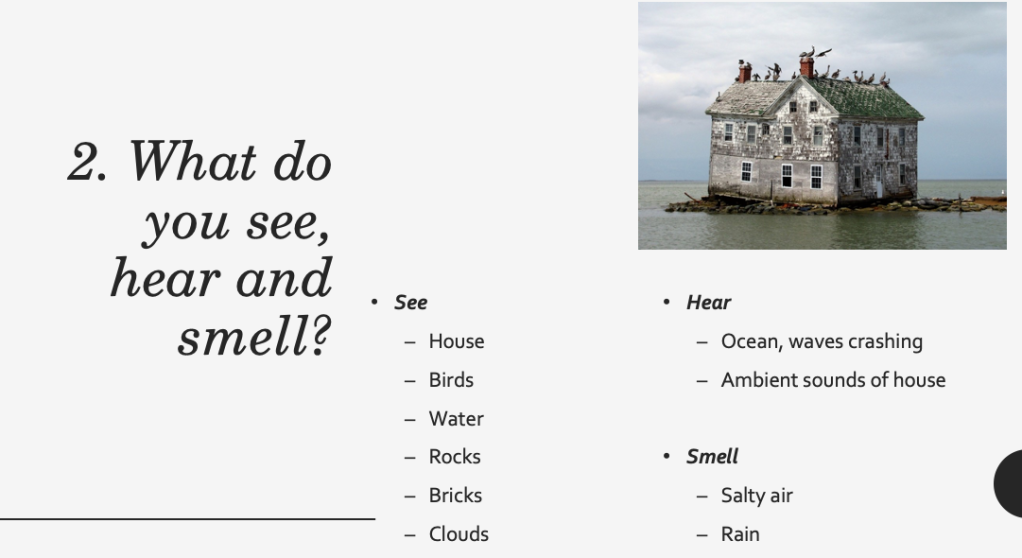AITSL STANDARD: 1.5 – Differentiate teaching to meet the specific learning needs of students across the full range of abilities
Develop teaching activities that incorporate differentiated strategies to meet the specific learning needs of students across the full range of abilities.
The Situation
Often, I find that students are quite vague about where their story takes place.
For example, “My story takes place in a small town.”
My first question is, “which country?” because the geography, climate, culture and people are different for every ‘small town’.
It is important that students know that writers research intensely about all facets of their writing. They look at maps and consider where events take place for the sake of realism and detail. They ask questions that will create a sense of realism in their narratives.
The Solution
This section is focused on getting students to visualize by using images as a reference point for their writing. They are encouraged to ask questions and generate new perspectives on their existing ideas.
Visualisation is a large part of good creative writing. Visualisation allows a writer to chase realism.
Our goals as writers is to capture the human experience.
For example, if their character was on a rollercoaster, what does that feel like? How is the human body impacted? What sounds are created by the movement of metal?
Fun Facts
Unlike Stephen King who has a vicious writing schedule, many novels take years and years to write.
The Lord of the Rings – J.R.R.Tolkein (12-17 Years)
Gone with the Wind by Margaret Mitchell (10 Years)
Infinite Jest by David Foster Wallace (7 Years)
There are a number of reasons why, but it is difficult to deny that these narratives are complex – especially when maps are involved such as in LOTR. Writers recreate the world around them.
Task
Below I have outlined how to model to students how to begin their story, starting with locating an image through Google Search, up until their first paragraph using a word bank.















While this section has been focused on setting, it could also assist their exploration of character.
Encourage students to find images that relate to their character and follow the same process. Remember, some students are not confident with drawing their character out of fear of judgement. Images are a fantastic way to capture what a student is already thinking about.
Depending on your school’s approach to ICT in the classroom and availability, you might like to prepare stock images for your students.
One thought on “Visualization and Creative Writing”